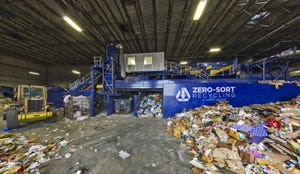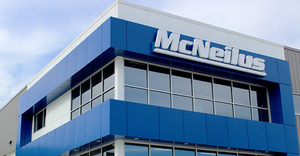A Look at One Australia Firm’s Push into the North American Landfill Gas-to-Energy Market
The addition of the family-owned businesses’ energy division brings EDL up to the third largest landfill gas operation company in the U.S.
Australia firm Energy Developments (EDL) is making a big splash as it rapidly builds a presence in the U.S. landfill gas-to-energy business. Two months ago the firm made its boldest move, acquiring Lansing, Mich.-based Granger’s energy services division, including 16 fully operational landfill gas-to-energy (LFGTE) projects. Collectively the sites produce 85 megawatts of energy in six states.
EDL has focused on expanding its North American business for several years. In addition to the Granger deal, in the past 18 months, it’s acquired the Energy Systems Group’s LFGTE assets, including Pecan Row in Georgia and Iris Glen in Tennessee, and the Lidya LFGTE project in Montreal. The company also launched a new facility in Brown County, Ohio.
“The Granger acquisition builds on this growth strategy. These assets are complementary to our existing U.S. business and allow for the benefits of real scale in the combined businesses,” EDL CEO James Harman says.
The addition of the family-owned businesses’ energy division brings EDL up to the third largest landfill gas operation company in the U.S. Overall, its installed capacity rose to 204 megawatts with the Granger additions.
“The two businesses are very complementary,” Harman adds. “For example the Granger business has strong well field capability and EDL has strong asset management capability. Granger has certain sites that are prospective candidates for high BTU conversion, and we are currently reviewing options that this acquisition brings to EDL [in this area],” he says.
All 16 sites having operating facilities in place and all have long-term fuel and offtake contracts. The company will also retain most of the 50 Granger employees from the energy division, who will be joined by its own staff.
“The acquisition positions the combined business as a full solution provider, which is an important market advantage,” says Harman. “Our immediate plan is to successfully integrate the two businesses and capitalize on the synergies that exist between them.
Harman adds that there were similarities in the Granger division’s structure and configuration to EDL’s existing business, and points to good geographic overlap with Granger’s Michigan and Pennsylvania sites with EDL’s existing Ohio sites. Additionally, the move broadens EDL’s operational capability into non-electric capabilities for landfill gas.
The decision to sell was tough for the board and the Granger family, says Tonia Olson, Granger’s director of governmental and community relations.
“We consider the energy division a valuable part of the company but knew we could not make the financial commitment necessary to pursue developing and advancing in the energy industry as it operates today with the regulatory requirements, the technology and type of capital needed,” Olson says. “We wanted to see the projects grow, so we thought finding someone that could take those projects and develop new ones would be the best solution.”
Granger, which developed, owned and operated the 16 projects that EDL adds to its portfolio, also supplies gas to projects at two Lansing area landfill gas-generating stations. Its role as supplier will continue.
Beyond, Granger will concentrate on growing its waste division. Currently this division includes two landfills, one materials recovery facility, two transfer stations, and hauling and recycling services in four Michigan regions.
The purchase earlier this year of Green Valley Recycling and Disposal moved the company’s waste division into Grand Rapids, a new market for Granger. “We see more opportunity moving forward,” says Olson.
“We were flattered that EDL decided to move its U.S. headquarters to the Lansing area. We are excited to be able to help bring a world player in the renewable sector here. We believe it will help in economic development, bringing valuable assets to greater Lansing in the way of jobs and more projects,” she says.
About the Author
You May Also Like




